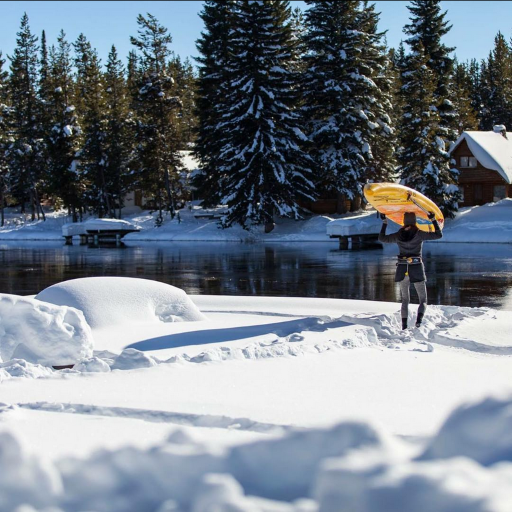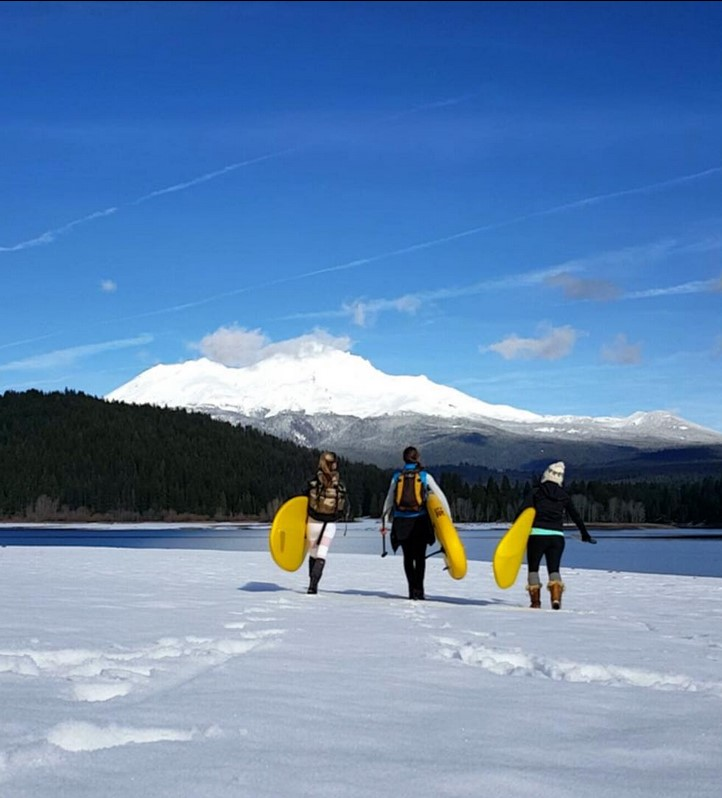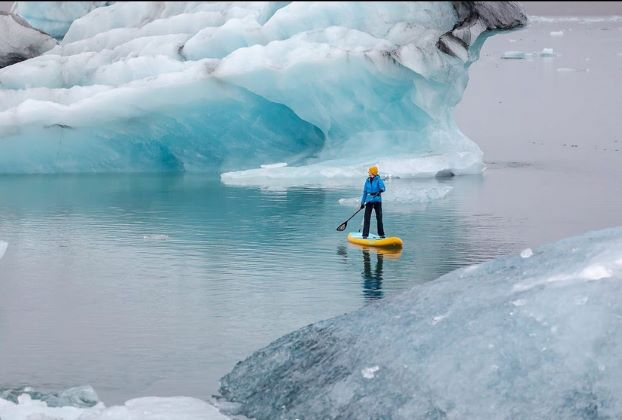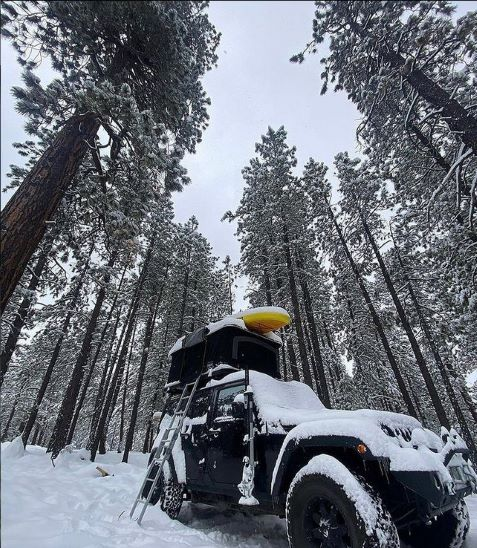
Can You Use an Inflatable Paddle Board in the Winter?
Yes if you have a quality made paddle board you can enjoy paddle boarding year-round. With either an inflatable paddle board or a solid paddle board. Glide paddleboards all work exceptionally well for year-round paddle boarding and Glide was one of the few major companies not subject to the 2022 recalls.
Absolutely, cold-weather paddleboarding is not only possible with an inflatable paddle board, but it can also be an invigorating experience that brings a fresh perspective to your water adventures. At Glide, we understand that paddleboarding isn't just a sport—it's a year-round passion. Here's how you can make the most of your inflatable paddle board when the temperatures drop.

Winter Paddling: An Icy Adventure with Warm Rewards
Winter brings a serene beauty to lakes and rivers. The stillness of the surroundings coupled with the crisp air can transform your paddleboarding experience. Before setting out, ensure you're dressed for success with waterproof gear, neoprene booties for insulation, and layers that can handle a splash while keeping you warm. Remember, proper attire and safety gear are paramount; this is non-negotiable when temperatures are low.
Choosing Your Winter-Ready Inflatable Paddle Board
When it comes to selecting an inflatable paddle board that withstands the winter chill, durability is key. Glide's inflatable paddle boards are crafted with multi-layered construction, giving you the durability of 4 layers without compromising on performance. A wider board offers stability for those choppier waters, which can be more common in winter. And with a generous weight capacity, you can carry extra clothing, a dry bag for essentials, and even a thermos for a warm sip mid-paddle.
Embracing the Chill: The Joy of Paddleboarding in Winter

Paddleboarding in freezing temperatures isn't just about braving the cold; it's about embracing a unique experience. The off-season often offers peaceful solitude, and the absence of crowds means you're likely to encounter wildlife that you wouldn't during busier times. Imagine performing SUP yoga as steam rises off the water, or exploring ice-fringed shorelines; it’s about discovering a winter wonderland from the best vantage point there is—your paddle board.
Keeping Your Board in Top Shape Through the Cold
Just as you take care of yourself in the cold, your inflatable paddle board requires attention too. Storage is crucial; keep it inflated for consistency or if deflated, ensure it's properly dried and stored in a temperature-controlled space. Glide prides itself on providing boards that are not only optimal for use but also for ease of maintenance.
Join the Glide Tribe
At Glide, we're not just selling paddle boards; we're fostering a community. Whether you're a seasoned winter paddler or just starting, we want to hear about your chilly escapades. Share your frosty journeys and SUP yoga moments with us at #glidesup on Instagram.
No matter the season, Glide is dedicated to enhancing your paddleboarding experience with boards that promise quality, durability, and an unbeatable ride. So why wait for summer? Your paddle boarding adventure awaits, no matter the temperature.

Cold weather paddling is a great way to stay in shape, improve your mental health and enjoy the world around you. When winter paddle boarding, or paddle boarding in cold temperatures be sure to wear the proper clothing and have the right safety equipment.
Water temperature and wind chill during the winter months can make a normally easy session harder to complete.



